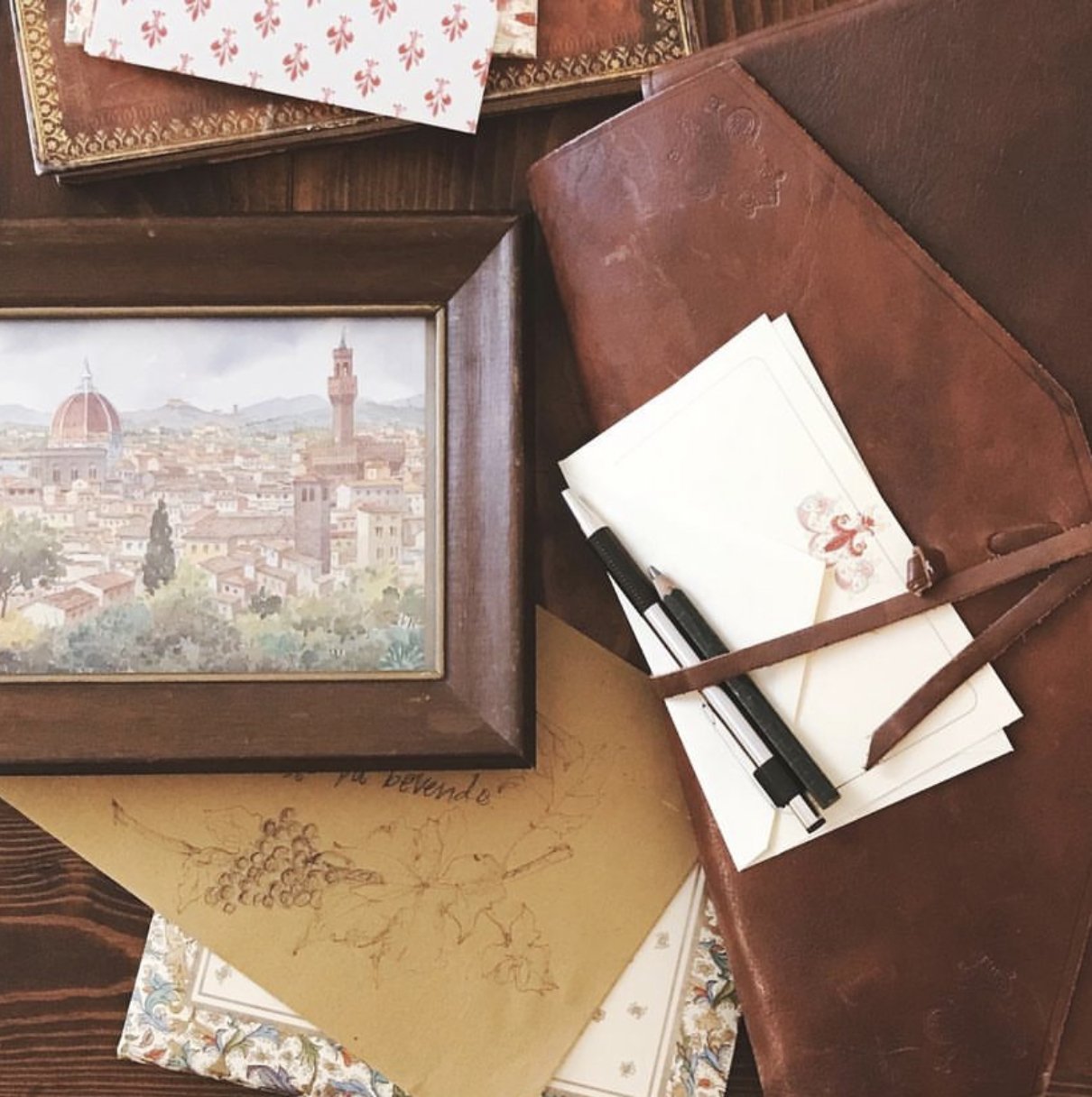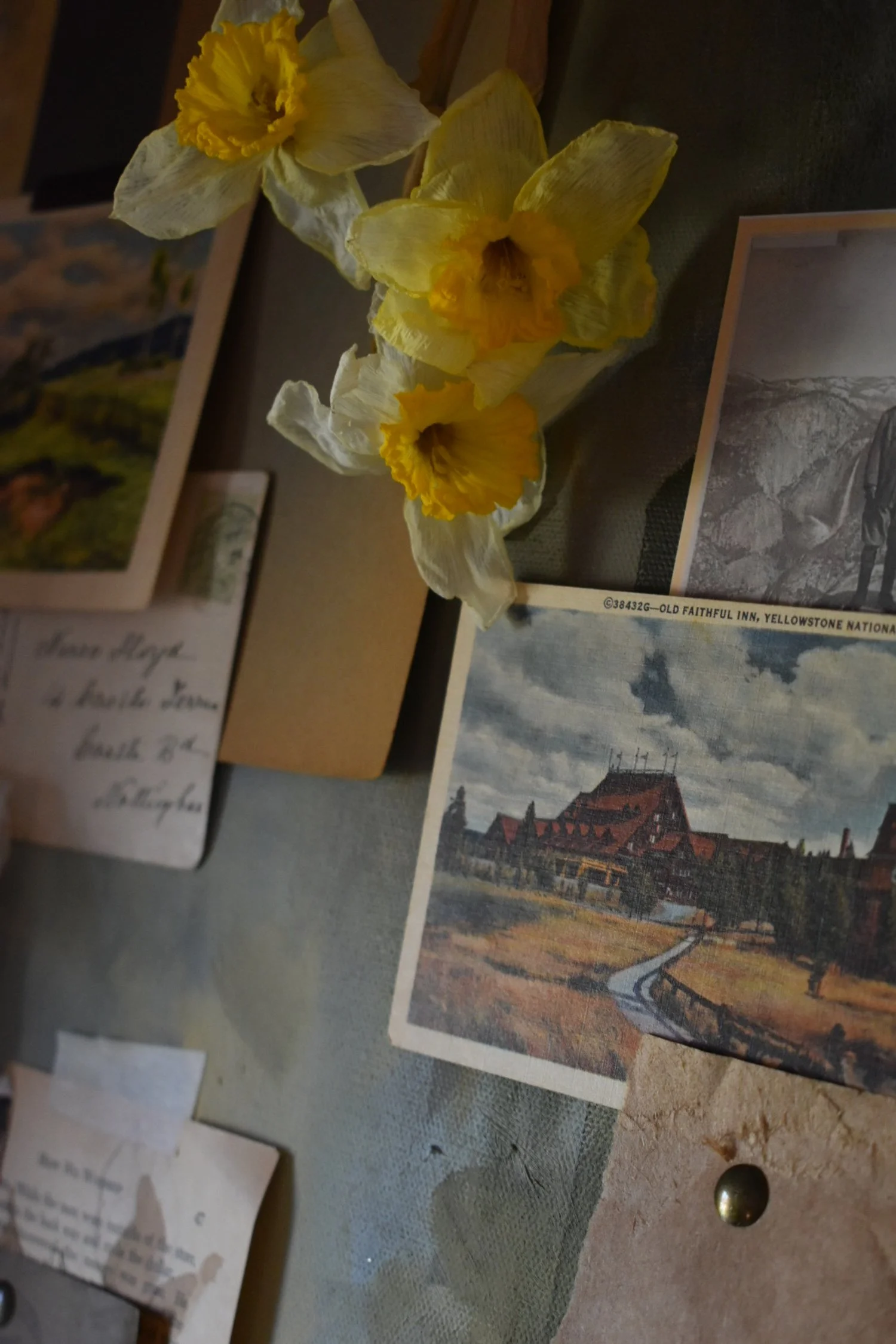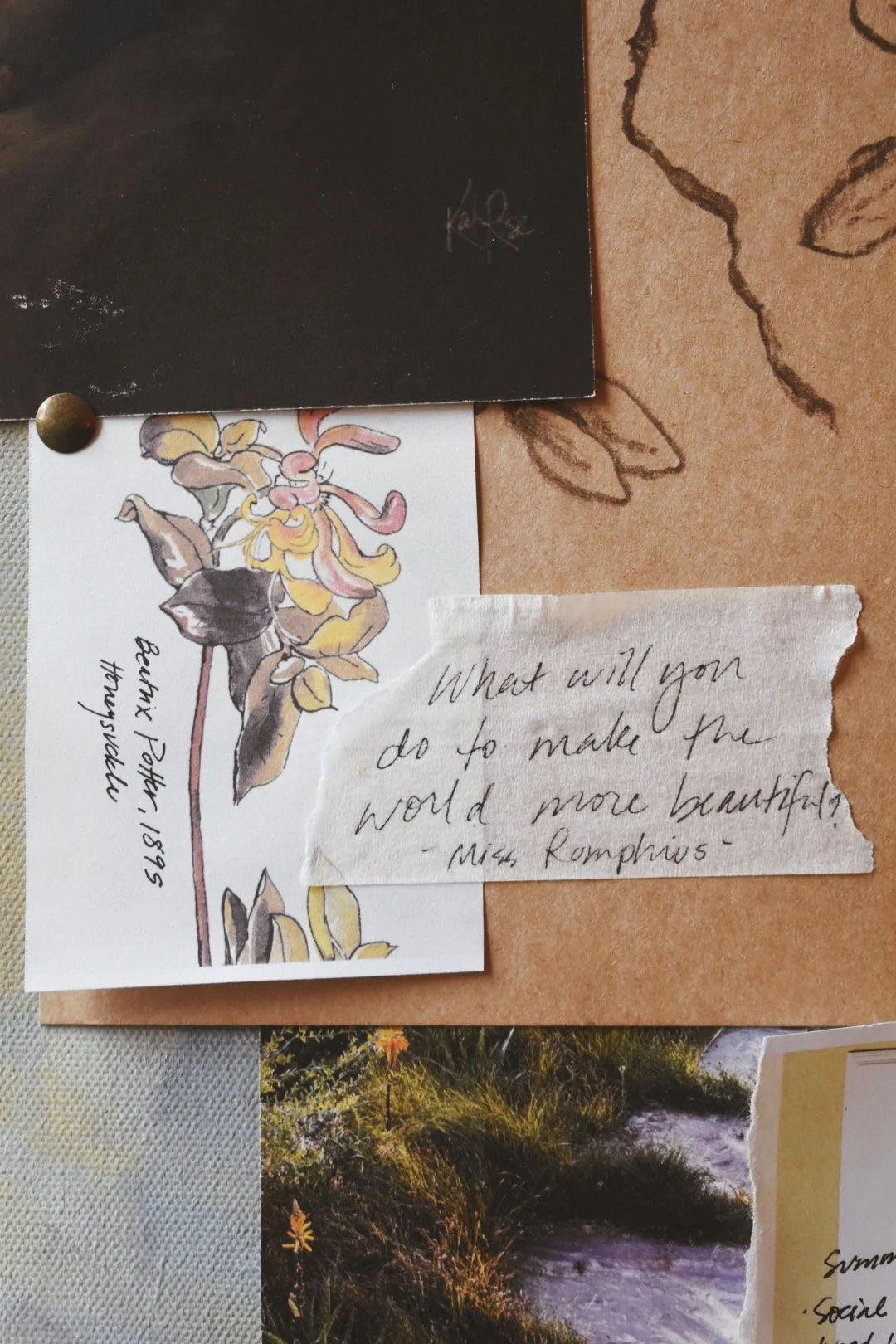
Katy Rose Collection: Art, Words
Simple Nature-Inspired Art Projects with your Children!
Children naturally love creating art, but sometimes parents hesitate, thinking they aren’t artistic enough to guide them. The good news? You don’t need an artistic bent to enjoy these nature-inspired projects. These simple, open-ended activities let your children take the lead while you enjoy the process together. With just a few materials, you can spark creativity, encourage outdoor exploration, and create meaningful bonding moments.
Additionally, these projects align perfectly with the message in my new book, Miss Prim Goes Wild—a whimsical story about discovering the beauty of the wild and embracing nature. So whether you are having a creative morning at home with your children or hosting a nature-themed playdate or homeschool co-op group, grab the book, some leaves, mud, or a bundle of celery, and let’s make art together!
Project 1: Mud and Water Abstract Art
Materials Needed:
Mud (mix soil and water to desired consistency)
Paintbrushes or fingers
Cardstock or thick paper
Instructions:
Collect soil and mix it with water to create a muddy paint. You will want to try and locate very fine dirt in your yard. My children had fun finding the best version.
Use brushes or fingers to paint swirls, lines, and textures.
Add sticks or leaves to make imprints or scrape through the mud for depth.
Creative Twist: Once dry, outline sections with a black marker or add pops of color with paint for a mixed-media look. We took a stick of willow charcoal and added in some abstract marks.
Project 2: Celery Flower Prints
Materials Needed:
Celery stems in tact
Paint (washable or acrylic)
Paper or fabric
Instructions:
Cut the celery near the base to reveal a flower-like pattern, about one to two inches above the connected base.
Dip the cut end into paint and press onto paper to create flower prints.
Experiment with different colors and layers for a vibrant effect. Paint on green leaves if you’d like.
Creative Twist: Use fabric paint on tote bags or T-shirts for wearable nature art.
Project 3: Leaf Snake with Acorn Eyes
Materials Needed:
Dried leaves
Acorns
Glue (hot glue for a secure hold)
Paper
Instructions:
Arrange leaves in a curved, snake-like shape on paper
Glue leaves down, one by one, to form the body.
Add acorns for eyes and paint or draw a tiny tongue.
Creative Twist: Use different leaf colors for a patterned effect or add small twigs for a 3D appearance. Also, instead of gluing onto paper, you could use twigs or twine to form the body and attach the leaves, creating a stand-alone snake.
Project 4: Fairy Houses from Found Nature Objects
Materials Needed:
Bark, rocks, acorns, flowers, moss, leaves, and twigs
Optional non-nature items: popsicle sticks, small box or carton as a base
Glue. (Hot glue works well.)
Instructions:
Use a small carton as the foundation. Cover it with bark, moss, and other natural elements.
Build doors and windows using popsicle sticks and acorns.
Arrange rocks or twigs to create pathways and fences.
Creative Twist: Add a battery-powered tea light inside to make it glow at night!
(Someone loved using the glue gun!)
Project 5: Nature Collage Photographs
Materials Needed:
Leaves, flowers, pebbles, twigs, acorns—anything your child finds in nature
A flat surface (tabletop, white paper, a wooden board, or even the ground)
A camera or smartphone
A printer (optional for printing)
Instructions:
Go on a nature walk and let your child collect small treasures that catch their eye.
Work together to arrange the items on a flat surface, creating a pattern, picture, or abstract design. Encourage creativity—try a sun from yellow leaves, a butterfly from flower petals, or a swirling pattern of pebbles!
Once the design is ready, take a few close-up photos to capture the details.
Print the photos and display them as unique nature artwork.
Creative Twist: Create a seasonal series by repeating the project throughout the year with different natural elements. You can even turn the prints into greeting cards or framed keepsakes!
Nature is full of inspiration, and creating art from its treasures is a beautiful way to spark creativity and curiosity in children. These simple projects encourage hands-on exploration and provide free, meaningful bonding moments between parents and kids. And they help children see the beauty in the wild (just like Miss Prim learns in Miss Prim Goes Wild)!
Pin now to save the ideas for later
Two Boys Changing America
The year was 1867 in NYC, pre-cars or electricity.
The Roosevelt Museum of Natural History opened its doors under the direction of founder and curator, sickly 8-year-old Theodore Roosevelt. Housed in his bedroom, the hodge-podge collection showcased his treasure trove, something reminiscent of what you find in your own 8-year-old’s pockets when you do the laundry. He collected bones, rocks, insects, and small animals, even hiring his buddies to acquire new specimens. Observing how his father worked, founder of the actual Museum of Natural History, he read, collected, and took notes.
Just a few states to the west, another boy, John Muir, sat in his bedroom at the family homestead. It was the middle of the night, and his candle secretly flickered. The house creaked under the weight of eight sleeping children and their parents, who recently arrived from Scotland to make a better life in America. But unlike Teddy’s encouraging father, John’s father didn’t allow him to study such frivolous things as nature. So John woke himself up to read nature books by candlelight, risking severe whippings.
Back in New York, little Theodore found that his frail, asthmatic body transformed when he went into the mountains. As he grew, he spent as much time outdoors as possible. Years later, when his wife and mother died on the same horrific day, he escaped to the western plains and slept under the stars for weeks. He returned from that season of total darkness, prepared to face the next chapter of his life. And in that chapter, he was so convinced of nature’s positive effects on the body and mind, he worked to protect the land, America’s national treasure. While Theodore is best known as a United States President, one of his lifelong passions was nature.
John too escaped to nature after a traumatic event that almost left him blind. During his time of recuperation, all he could think about was getting out West to the mountains and towering trees he had always read about. He did just that, leaving behind his work as an inventor and engineer to answer the call of the wild.
Several years later, as Teddy moved into the White House, John settled into Yosemite Valley, spending months at a time living in the wilderness, taking notes, observing. He watched loggers and miners moving in, felling the massive sequoias and digging into the stunning mountain faces.
After years of studying the forests and mountains, down to the smallest plants and flowers, he had a deep understanding of the spectacular natural assets of the US. He also knew if there were no regulations to protect the land, it would be completely stripped for its resources. Though he felt some would only see him as a Scottish boy with a mish-mash education, he began writing papers, articles, and eventually books.
Back in D.C., President Roosevelt began to read John's words and was captivated.
He wrote John a letter, asking if he would guide him through Yosemite for a camping trip and a chance to hear more about his thoughts. He wrote, “I do not want anyone with me but you, and I want to drop politics absolutely for four days and just be out in the open with you.” John accepted. The two men met in 1903 and set out.
Theodore Roosevelt and John Muir on Glacier Point, Yosemite Valley, California, in 1903. http://www.loc.gov/pictures/item/93503130/
That trip, the meeting of those two men, was pivotal for our country. They walked and talked and sat around the campfire. They didn’t agree on everything, but they shared a deep respect for each other and for the land that was in their care. The Scottish immigrant educated the United States President. He shared his passion for the land and the need to preserve it for the generations to come.
Roosevelt said of that camping experience, "It was like lying in a great solemn cathedral, far vaster and more beautiful than any built by the hand of man."
And what came from that trip?
Teddy caught John’s enthusiasm and was convinced. He got to work.
Have you been to the Grand Canyon? It’s still there because the President saved it from obliteration by mining. We have Yosemite, 150 National Forests, and the five National Parks President Roosevelt established. We have birds that would have gone extinct if not for his 51 bird preserves across the states. We have the United States Forest Service and he got the ball rolling for the National Parks Service which provides the protection and upkeep of our natural treasures.
Those are the direct effects of the trip, and we’ll never be able to count the ripple effects.
We are the “generations to come” they were thinking of and I, for one, rarely think about how a hundred years ago people worked hard to keep these things around for me.
Now, we’re the ones with the 8-year-old boys and girls who are captivated by leaves and lizards, and we have the opportunity to encourage them and tell them they are right. Nature is a gift and we have a chance to steward it well, no matter our profession or acreage. It’s about having the humility to see that we are all small parts with the chance to leave something worse or better than we found it.
"We have fallen heirs to the most glorious heritage a people ever received, and each one must do his part if we wish to show that the nation is worthy of its good fortune." - Theodore Roosevelt
I did not set out to record this little bit of history, but came by it in a round-about way. When writing Miss Prim Goes Wild, I read some of the work of Doug Tallamy. His organization, Homegrown National Park, hopes to link thousands of tiny bits of ecologically-healthy space all across America to create the equivalent of a National Park in order to combat a threatened ecosystem. All he’s talking about is just the small healthy corners of people’s yards and parks.
So that led to me reading about our National Parks, which lead to President Theodore Roosevelt, which lead to the camping trip with John Muir. Then, of course, I had to know the stories behind the stories and traveled back to their childhoods.
And you know what? Once I knew those personal stories, I suddenly cared exponentially more about the National Parks. Because that’s what history does. As historian David McCullough says, “History tells us the stories of what people have been through.” And I think that’s what usually really makes us care.
(After writing this post, I was delighted to see there is a children’s book on the camping trip)
-MISS PRIM GOES WILD-
If you have little ones in your life, I invite you to look into my new picture book!
Click the picture below for the links to Amazon, Target, Barnes and Noble, and more.
Our List of 10 Favorite Nature Books
COUNTDOWN TO MISS PRIM GOES WILD!
Thanks for joining our weekly look at the inspiration behind my new picture book, Miss Prim Goes Wild.
I’d be so deeply honored if you considered adding this book to your home library. It’s one that can be read over and over again and even provides practical tips for your own garden!
Friends, this isn’t an exhaustive list, nor is it a collection of books I researched and then purchased in order to grow our love for nature. Rather, here are simply books we acquired along the way that happened to connect us to the natural world more. When I look back at years of reading aloud, these stand out as ones we revisited again and again, and then went out and saw the world a little bit differently.
Brambly Hedge – by Jill Barklem. A charming and imaginative series about a community of mice living in a hedgerow, celebrating the seasons and nature’s beauty.
Beatrix Potter’s Books – Classic tales of woodland creatures, like Peter Rabbit, that highlight the wonders and perils of the natural world.
Nature Anatomy – by Julia Rothman. A beautifully illustrated guide exploring the wonders of nature, from plants and animals to landscapes and ecosystems.
Wonderful Worms – by Linda Glaser. Fun and educational book about worms and their vital role in soil and ecosystems.
Miss Rumphius – by Barbara Cooney. A timeless story about making the world more beautiful.
My Side of the Mountain – by Jean Craighead George. A boy survives alone in the wilderness, learning perseverance and deep respect for nature.
Pond – by Jim LaMarche. A group of children work together to restore a dried-up pond, bringing life and beauty back to nature.
The Raft – by Jim LaMarche. A boy’s summer with his grandmother takes a magical turn when he discovers a raft that connects him to the wonders of the river and wildlife.
The Secret Garden – by Frances Hodgson Burnett. A lonely girl discovers a hidden garden that brings healing and transformation.
James Herriot’s Treasury for Children – by James Herriot. Heartwarming stories, with vivid illustrations, of animals and country life from a beloved vet in the English countryside.





































